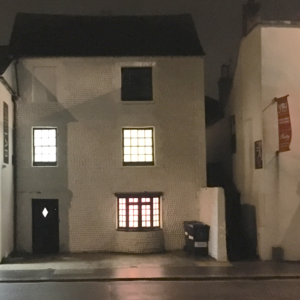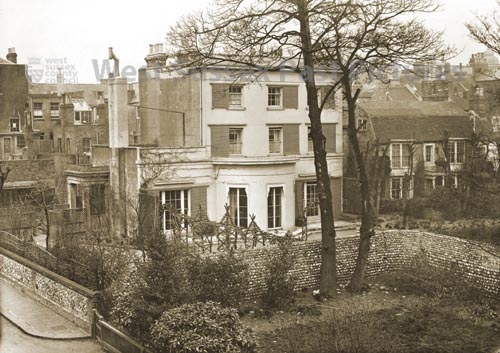George Dusart, John Broadwood and the Worthing connection.
Not many of the houses that stood in Worthing High Street in the 1840’s still stand today, indeed not many of the houses that stood there in the 1940’s survive until our own times. All the more remarkable then that the home of George Dusart ‘professor of music’ and organist at the Chapel of Ease (later St. Paul’s) is one of those few that have been spared demolition. Dusart collaborated with Lucy Broadwood’s uncle, Rev. John Broadwood, in preserving some of the oldest folk songs of Sussex and Surrey. The two men did not always see eye-to-eye on the best way of preserving the tunes: Dusart wanted to ‘correct the errors’ of the rustic singers, while Broadwood insisted they should be notated just as they were sung – the result was a compromise that probably did not fully satisfy either man.
In 1841 Dusart was living with his wife, Mary Ann, whom he married at Broadwater 13 years earlier. By 1841 they had five children, and Mary Ann’s mother, Elizabeth Jefferson was living with them.
Meanwhile, the Rev. John Broadwood was living in some splendour at Bedford House at the north end of Bedford Row. Broadwood had ‘livings’ in both Capel and Worthing, and towards the end of his life was really a ‘gentleman of leisure’, a life made possible by his farming lands, which we can safely assume were directed by a bailiff or manager. John had the time and the means to indulge his interest in the archaic music of the local ‘peasantry.’
By the time of the 1851 census, both men had moved away from Worthing, Broadwood back to Lyne House at Capel, and Dusart to London. However Mrs. Dusart was living with their children in Brighton, while Dusart himself had set up home with one of the family’s servants, by coincidence, also called Mary Ann. Dusart’s young ‘wife’ may have been his undoing as it is recorded he died of heart failure ‘brought on by excitement’ in 1865.
His true wife and widow, the first Mary Ann continued to live in Brighton, losing one of her daughters at the early age of seventeen, who, very confusingly, was also called Mary Ann.
Broadwood died at Lyne in 1864, free, it has to be said of any romantic or scandalous entanglements. His niece, Lucy, aged only six at the time, would of course go on to be a leading figure in the folksong revival of the late Victorian and Edwardian eras.


